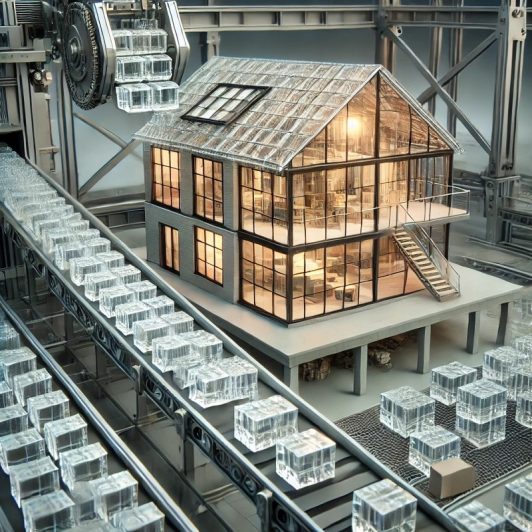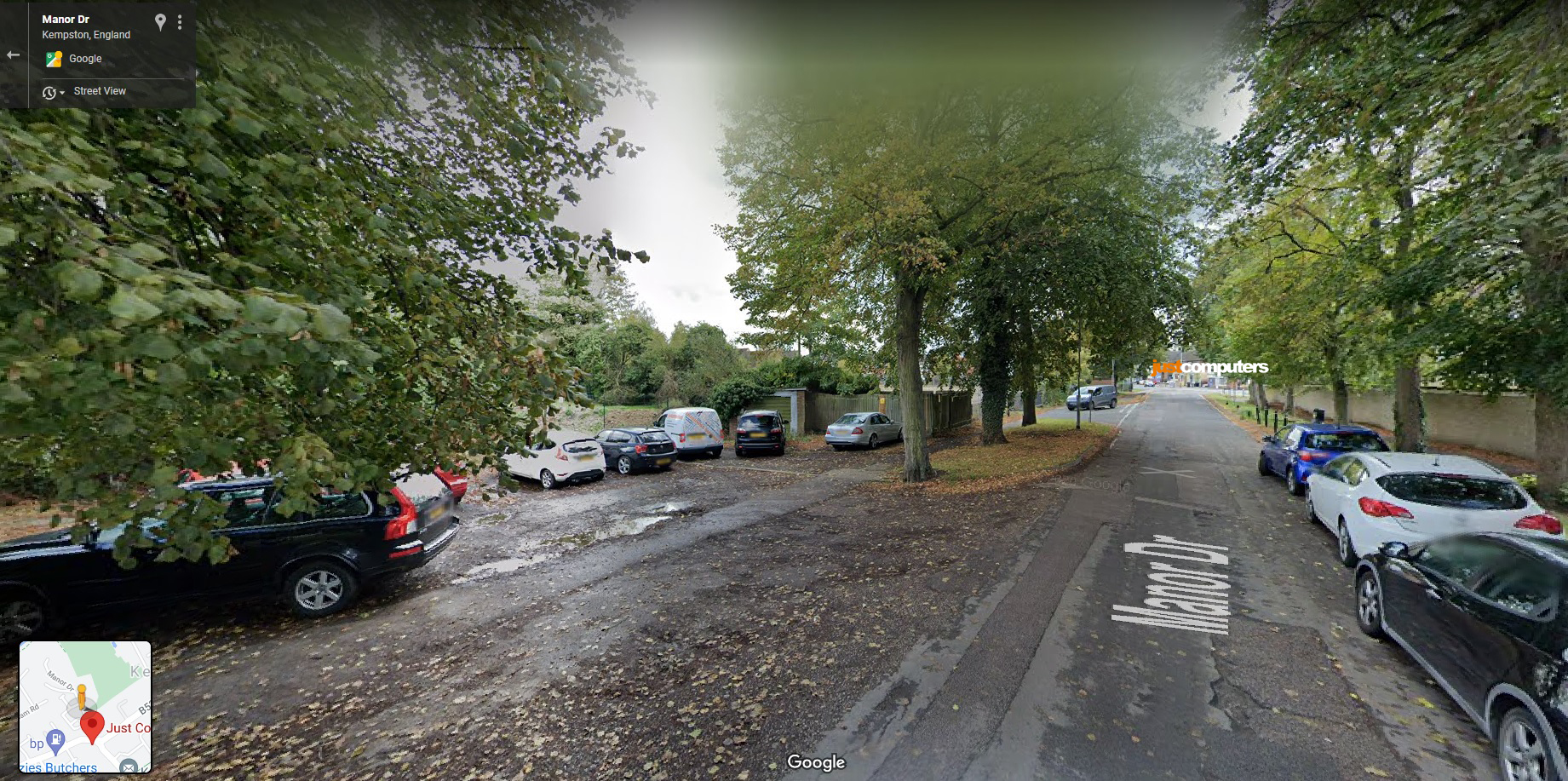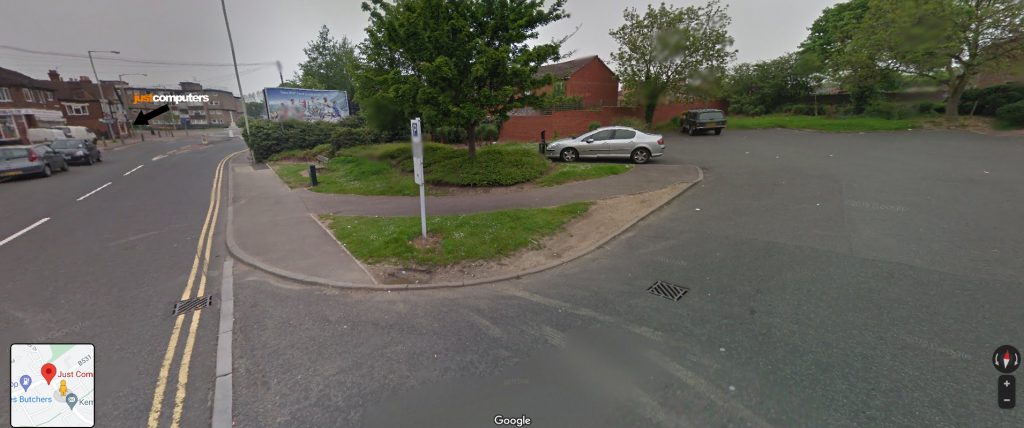
Engineers at the Massachusetts Institute of Technology (MIT) are developing a new kind of reconfigurable masonry made from 3D-printed, recycled glass.
Fits Together Like LEGO
MIT says the new multilayered glass bricks, each in the shape of a figure-of-eight, are designed to interlock, much like LEGO bricks.
3D Printed
One of the big advantages of the new glass bricks is that they are made using a custom 3D glass printing technology (provided by MIT spinoff Evenline). The inspiration for using glass and the brick’s shape came partly from when 2 of the engineers, Kaitlyn Becker, and Michael Stern, were still undergraduates and learned the art and science of blowing glass in MIT’s Glass Lab.
It was this experience that led Stern to design a 3D printer capable of printing molten recycled glass.
Tested
Becker and Stern collaborated to test whether 3D-printed glass could function as structural masonry units comparable to traditional bricks. Using the latest version of Evenline’s Glass 3D Printer (G3DP3), which melts recycled glass bottles into a printable form, they produced prototype bricks from soda-lime glass. The figure-eight design bricks featured two round pegs, similar to LEGO studs, allowing them to interlock and form larger structures. A removable material between bricks prevented scratches, enabling easy dismantling and recycling.
Strong
The MIT team tested the glass bricks’ strength using an industrial hydraulic press and found that the strongest bricks could withstand pressures similar to concrete blocks. These bricks were primarily made of printed glass, with a separately manufactured interlocking feature, suggesting that most of the brick can be printed from glass, while the interlocking part can be made from various materials.
The Advantages
The many advantages of the 3D-printed glass brick system include:
– Sustainability. The bricks are made from recycled glass, supporting circular construction by reusing materials and reducing the need for new manufacturing, which lowers the construction industry’s embodied carbon.
– Reusability. The bricks can be disassembled and reassembled multiple times for different structures, extending their lifespan across generations of buildings.
– Recyclability. Glass is highly recyclable. For example, the glass used by MIT’s 3D printer comes primarily from recycled glass bottles in the first place which are crushed, melted in a furnace, and then transformed into a molten, printable material used in the 3D glass printer. Also, once the glass bricks have been made, they can be remelted again and reshaped without contamination, allowing bricks to be recycled into new forms. As Kaitlyn Becker, assistant professor of mechanical engineering at MIT says: “We’re taking glass and turning it into masonry that, at the end of a structure’s life, can be disassembled and reassembled into a new structure, or can be stuck back into the printer and turned into a completely different shape. All this builds into our idea of a sustainable, circular building material.” Becker also highlights how, “As long as it’s not contaminated, you can recycle glass almost infinitely”.
– Strength. As highlighted in MIT’s mechanical tests, the glass bricks can withstand pressures similar to concrete, making them viable for structural use.
– Their interlocking design. Like LEGO, the bricks feature interlocking pegs, enabling easy assembly, and creating strong, self-supporting structures.
– Scratch and crack prevention. A removable material between bricks prevents damage during assembly and dismantling.
– Adaptability. The figure-of-eight design allows for curved wall constructions and offers flexibility in design. This allows for more creative and varied structural forms, making it possible to create aesthetically unique and functional buildings that traditional brick designs may not easily support.
– The potential for scalability. The system can be scaled up to create larger structures, with potential for various configurations and reconfigurations. As Stern says: “We have more understanding of what the material’s limits are, and how to scale,” and that “We’re thinking of stepping stones to buildings, and want to start with something like a pavilion – a temporary structure that humans can interact with, and that you could then reconfigure into a second design.”
– The environmental benefit of minimising the manufacturing of new materials and reducing the construction industry’s “embodied carbon”, i.e. the greenhouse gas emissions associated with every process throughout a building’s construction, from manufacturing to demolition.
Drawbacks?
Although the system is still at the development stage and the engineers have been keen to highlight the advantages of the system, it is possible to think of some of the more obvious potential disadvantages, such as:
– Producing glass bricks using 3D printing requires specialised equipment and processes, which might be more expensive and complex than traditional brickmaking.
– Glass typically has poor insulating properties, so structures made from glass bricks may not retain heat as effectively as those built with traditional materials.
– The need for a separate interlocking feature made from a different material could complicate the production and assembly process, reducing the system’s simplicity and uniformity.
– Widespread use of glass bricks might face resistance due to unfamiliarity or scepticism about their long-term durability and safety in construction. Also, the unusual shape and the fact that it’s a new material may require training, e.g. for builders.
Glass Already Being Used To Make Bricks
Although the 3D printer idea for full glass bricks is new, it’s worth noting here that recycled glass is already being experimented with in similar ways for use in construction projects. For example, researchers at Nanyang Technological University (NTU) in Singapore have developed a concrete mix using recycled glass as a substitute for sand, which is increasingly scarce due to overuse. This glass-based concrete has been successfully used in 3D printing to create a 40 cm-tall concrete bench, demonstrating its viability for load-bearing construction applications.
What Does This Mean For Your Organisation?
The development of 3D-printed glass bricks at MIT presents a promising and bold vision for sustainable construction, combining innovation in design and environmental responsibility. By reimagining glass as a structural material and leveraging 3D printing technology, these interlocking bricks could offer a versatile solution that embraces circular construction principles. As the building industry seeks to reduce its environmental impact, these bricks present a potential alternative by utilising recycled glass, minimising waste, and allowing structures to be easily reconfigured and recycled at the end of their lifespan.
While challenges remain, such as higher production costs and concerns about insulation and durability, the adaptability and recyclability of the glass bricks highlight their potential. As with any new material and system though, acceptance and implementation are likely to take time, something that we’re running out of when it comes to decarbonising industries.
However, looking on the bright side, the demonstrated strength of the bricks, combined with their aesthetic and sustainable benefits, points towards a future where glass could play a significant role in eco-friendly construction. The success of this system could even pave the way for further exploration of recycled materials in 3D printing, and with continued innovation, it’s possible to see how these glass bricks and/or concrete using crushed up glass instead of sand, could become a cornerstone in the move towards more sustainable building practices.




